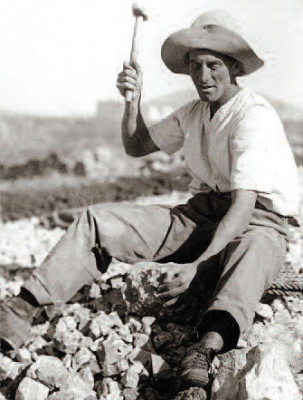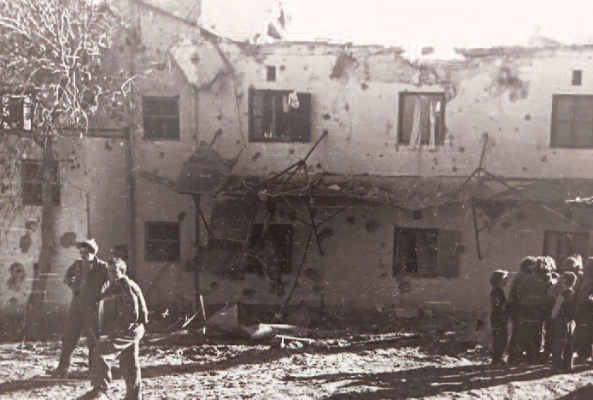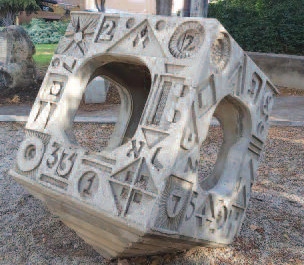Kibbutz Building’s Tragic Past
Story and photos by Lydia Aisenberg
Almost a decade after Polish immigrant pioneers founded the Jezreel Valley kibbutz of Mishmar HaEmek in 1921, and were still living in tents and wooden huts, they began the construction of the first concrete building.The large two-floor structure and bomb shelter was purpose-built in 1930 to be a safe haven, a building made-to-measure to protect the community's collective pride and joy, their kibbutz-born kinder.
The thick walls, floors and roof of the building were constructed from concrete mixed with rocks, brought by horse and cart to the kibbutz from the surrounding Menashe Hills.The pioneers, women working alongside the men, wielded sledgehammers and mallets to reduce the rocks to a size that could be fed into a crushing machine. This gravel that was created was then mixed with concrete to build the structure they needed to provide a safe haven for the children against attacks from Arab marauders.
The roof of the building was doubly reinforced with a high, thick wall running around the perimeter of the roof, to be used as a defense position if necessary – and it was on numerous occasions.
Less than two decades after construction, during the Chanukah holiday of 1948 – and just months after fighting a ferocious 10-day battle in and around the kibbutz during the 1948 War of Independence – the building was extensively damaged when an Iraqi plane, seeking to attack a nearby British-built airfield, offloaded their bombs instead on the kibbutz children's house.
Three 9-year-old children were killed, many others injured, and a member working in the house lost her leg in the attack.
The boy and two girls who died in the bombing are memorialized in a marble plaque embedded in a large rock nearby. Another memorial, in the form of a large concrete dreidel with three iron torches reaching out to the sky, stands alongside.
The enormous damage of 1948 was repaired and the structure continued to be used as a children's house until the early 1990s when it once more underwent a serious renovation. No longer necessary for kibbutz kinder, the building was used until a few years ago as offices for the kibbutz administration, but was vacated when dangerously large cracks began to appear in the walls and floors.
This week, with preparation for the up-and-coming Chanukah holiday well under way, octogenarian and nonagenarian members of the kibbutz – many of whom spent a period of their childhood living in the cooperative educational system of the kibbutz in the structure their parents built – stood by with their children and grandchildren, unabashedly emotional as the building that was in recent years deemed dangerous and irreparable was demolished.
As a massive bright yellow CAT excavator began to demolish the historic complex, the building groaned deeply as wall after wall was knocked to the ground, huge clouds of dust billowing into the air.A few short hours later, the rubble and 90 years of history left the kibbutz packed into a fleet of heavy trucks – vivid memories, however, remaining in the hearts and minds of the onlookers.
In recent times, film, photographs and written material have been collected and lodged in the ever-expanding and already packed kibbutz archives.Video interviews with kibbutz members, discussing their relationship with the building and leading up to the decision to demolish the structure, proved to be extremely powerful and emotional, especially those with the brother and sister of two of the children who died, now grandparents themselves who have spent their lives in the kibbutz their parents founded.
The building might have physically left the kibbutz, but the community will always be historically and emotionally attached to that first concrete structure that no longer exists, the symbol of a collective child-rearing system that has also become part of conversations about "back in the day", since children's houses were disbanded in Mishmar HaEmek after the 1991 Gulf War.











Comments